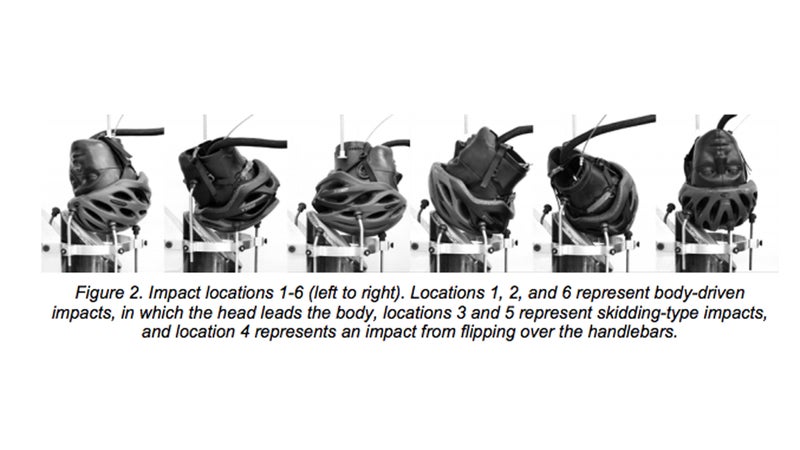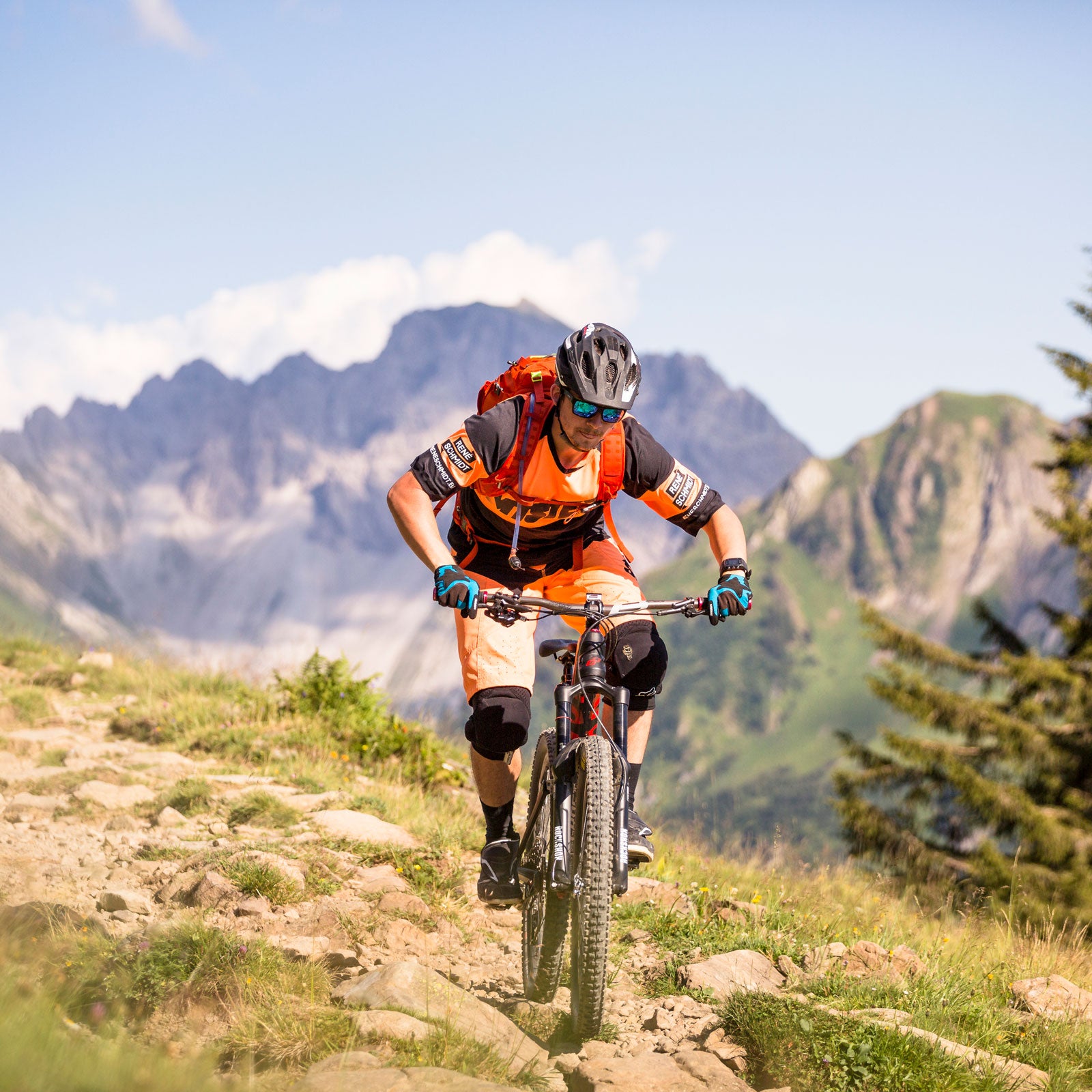A recent report out of the Helmet Lab at Virginia Tech rates 30 of the most popular cycling helmets based on their ability to reduce the risk of concussion. The have the potential to shake up the industry and consumer buying patterns by ranking some helmets as safer than others.
Up until this study, every helmet on the market has been considered as safe as any other because each meets U.S. Consumer Product Safety Commission (CPSC) standards. Europe has its own standards (EN-1078), and there are additional tests for downhill certification (ASTM F1952). But all of these accreditations operate on pass-fail systems. If you can buy it in a store in the United States, a helmet has successfully passed the set by the CPSC and is considered safe.
“Manufacturers are pretty limited by liability in what they can say about a helmet’s safety. They can tell you that their helmet meets the standards,” says Megan Bland, a Ph.D. candidate who led the Virginia Tech research. “We are much freer to talk about the nuance and safety of each helmet because we aren’t limited by that liability.”
The Virginia Tech researchers created their own set of . Unlike CPSC standards, which call for a series of drop tests on the top of the helmet, V-Tech also measured glancing blows and oblique angles. The team tested four samples of each helmet model, recording impacts on six distinct regions for a total of 24 data points per model. The six locations were selected according to crash data to simulate the most statistically probable accidents: three represent headfirst crashes, two are skidding impacts with hits to the side of the head, and one enacts an over-the-handlebars fall with force to the back of the head. The researchers also used a more realistic head form (nylon-based as opposed to the CPSC’s metal version) and mimicked a pliable neck joint instead of the rigid constraints mandated by the CPSC. These changes reflect today’s deeper understanding of and focus on brain injuries, whereas the older standards were designed around preventing skull fracture and death.

“Despite what the [CPSC] standards assess, there is plenty of data that shows that most cycling impacts happen at an angle, and that affects the way your head rotates and the type of injuries you could sustain,” says Bland. “Our goal was to replicate real-world impacts.”
On a scale of zero stars (the equivalent of not wearing a helmet) to five stars (the safest), four helmets received top marks, 12 earned four stars, and 12 garnered three. The ($200) ranked the safest, followed by the ($100) and ($150). No single brand dominated the rankings, nor did a helmet’s price correlate with protection. For instance, the ($75) outperformed the ($225) and the ($250). The ($100) and ($60) were the only two models to earn two stars, the lowest ranking assigned in the test.
Part of the , which has been researching concussions in football players since the early 2000s and released its first rankings of that sport’s helmets back in 2011, the Virginia Tech team has been working on its cycling ratings for more than three years but draws on a deep repository of brain-injury research. The researchers decided to delve into cycling now because the volume of injuries far exceeds those in the team sports they study, simply by virtue of the number of participants.
According to Thom Parks, senior director of product safety at Giro, Virginia Tech’s research is worthy. “There are inherent limitations,” he says. “They couldn’t buy 100 models of a helmet; they couldn’t do the diversity of testing that we would like them to do.” (Giro and Bell, both owned by Vista Outdoors, operate a test lab of their own called .) “But,” he adds, “they are good scientists, their undertaking is ambitious, and, from what I can see, the overall approach is valid and they are getting good information.” Parks isn’t alone in the industry in his positive assessment of the Virginia Tech study. “Greater testing on products like helmets is a good thing as long as the methods are transparent, and Virginia Tech has been good about making its criteria and process clear,” says Eric Bjorling, spokesperson for Trek, whose Bontrager Ballista helmet earned top marks. “For consumers, it’s a good way to verify that the products that they’re using have gone through an independent review.”
Still, even Bland admits there are limits to Virginia Tech’s research. “There is an infinite realm of impact scenarios, so you have to put a limit on the testing you can do,” she says. “We have used the likeliest scenarios. Proportionally, a five-star helmet will give you the best chances in an accident.”
The cycling helmet test is an ongoing project, says Bland. Virginia Tech intends to release ratings on another 15 helmets this fall and plans to continue testing on current and upcoming models. That’s good news for consumers. Not only does it help cyclists choose the safest helmets possible, it also means manufacturers will likely start paying attention and working even harder to build better lids. Says Bjorling, “If an organization like Virginia Tech can provide greater criteria and a deeper understanding of what people need from their helmets to enjoy bikes more safely, that can only help.”


